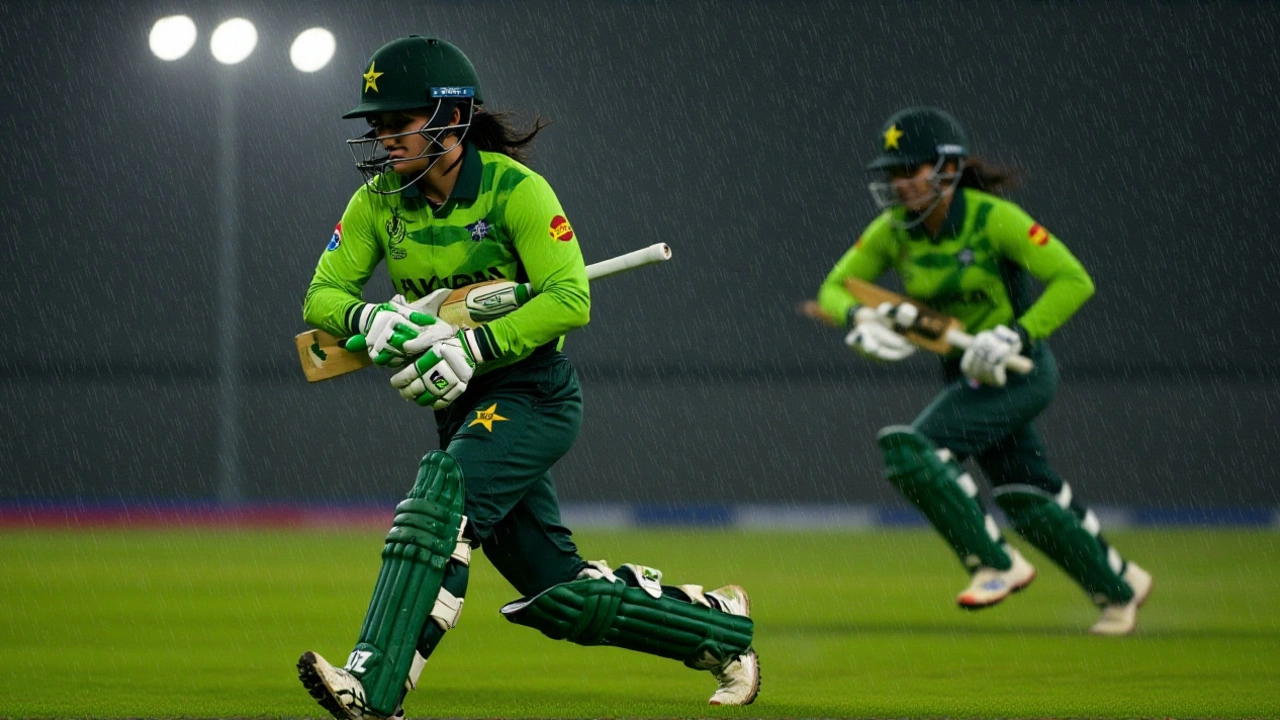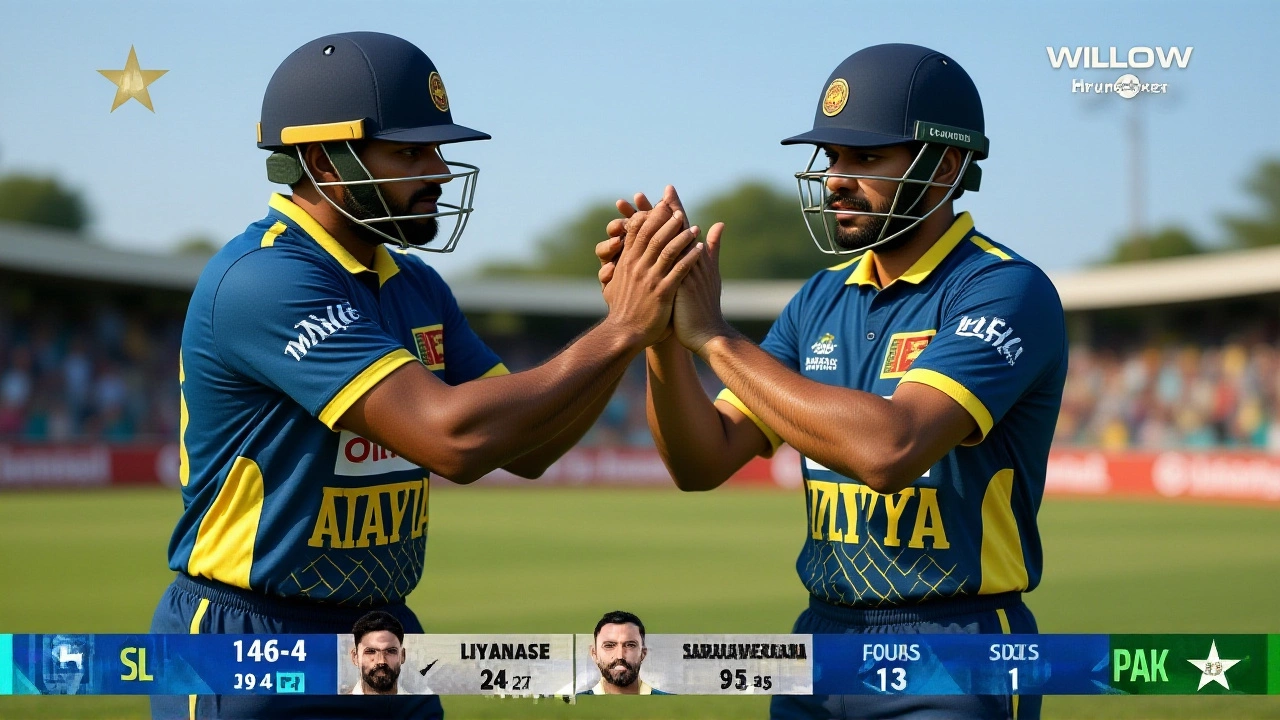On a crisp Friday evening in Rawalpindi, Pakistan didn’t just win a match—they rewrote the script of their rivalry with Sri Lanka. Chasing 289 with ease, Pakistan sealed the second ODI by eight wickets on November 14, 2025, at the Rawalpindi Cricket Stadium, clinching an unassailable 2-0 lead in the three-match series. It wasn’t just another win. It was the fourth consecutive bilateral ODI series victory for Pakistan against Sri Lanka—a streak that now stretches back over five years and carries the weight of quiet dominance. Captain Babar Azam, named Player of the Match for his calm, composed 50 off 68 balls, guided his side home with 10 balls to spare, while Sri Lanka’s promising total of 288/8 crumbled under the weight of missed opportunities.
Why Sri Lanka’s Batting Collapsed on a Flat Pitch
It’s rare to see a pitch so generous, so true, and yet yield so little from a top-order that looked dangerous. Sri Lanka posted 288, but six of their seven top batters—starting with the opener KIC Asalanka—got starts between 20 and 40 and failed to convert. The numbers don’t lie: 20 extras in 50 overs, more than the individual scores of four of their top six. Pramod Madushan and Hasaranga tried to hold things together with late fireworks—37 and 11 respectively—but the damage was done early. The first powerplay yielded 77 runs, but by the 30th over, Sri Lanka had lost five wickets. The 5th-wicket stand between Samarawickrama and Liyanage added 50, but it came too late. The second innings drinks break at 159/5 felt like a funeral procession.
Pakistan’s Chase: Calm Under Pressure
Meanwhile, Pakistan’s chase unfolded like a masterclass in composure. With Shaheen Afridi sidelined by illness, Abrar Ahmed and Mohammad Wasim stepped in, and the middle order held firm. Babar and Mohammad Rizwan stitched together 177 runs for the first wicket before Rizwan fell for 23. The real hero? Patience. Pakistan reached 177/2 at the first drinks break of their innings, needing 112 off 19 overs. The required rate hovered just above 5.8, but the strike rate never panicked. Babar, who had been in a slight rut, looked reborn—playing straight, rotating strike, and punishing the loose ones. At 50 off 68 balls, he didn’t blaze—he built. The final 50 runs came in just 8.2 overs, with no late drama. Just quiet, efficient cricket.
A Streak That Speaks Volumes
Four straight series wins against Sri Lanka. That’s not luck. That’s consistency. Since 2021, Pakistan have played six bilateral ODIs against Sri Lanka—winning all six. Sri Lanka, meanwhile, haven’t won a bilateral ODI series against Pakistan since 2019, and even that was in Colombo. This isn’t just about wins—it’s about psychological dominance. On-air commentators on NDTV Sports didn’t mince words: “This isn’t rivalry anymore. It’s a pattern.” The numbers back it up: Pakistan have now won 11 of their last 13 ODIs against Sri Lanka at home. The last time Sri Lanka won an ODI in Pakistan? 2018. In Lahore. And even then, they needed a miracle.

What’s Next? The Final Test of Resolve
The third and final ODI is set for November 16, 2025, at 9:30 am GMT, though the venue remains officially unconfirmed. Sri Lanka will likely bring in fresh legs—perhaps Dushmantha Chameera will be asked to open the bowling, and J. Liyanage might get a chance to bat at three. But the pressure is mounting. They’ve lost two straight matches. Their captain, KIC Asalanka, was adjudged lbw in a controversial review at 21.2 overs in Rawalpindi—a moment that echoed through the commentary box. For Pakistan, the question isn’t whether they’ll win—it’s whether they’ll make it look easy. Will Babar go for a century? Will Rizwan reclaim his form? Will the spinners—Abrar Ahmed in particular—exploit the drying pitch?
The Quiet Rise of Pakistan’s New Era
There’s no fanfare. No trophy lifts in the middle. Just quiet efficiency. Pakistan’s team now blends youth like Abrar Ahmed with veterans like Babar and Rizwan. The bowling attack, without Shaheen, looked surprisingly balanced. The fielding? Sharp. The leadership? Unflappable. This isn’t the Pakistan of 2015, chasing 300 in desperation. This is a team that knows how to win under pressure—and doesn’t need to prove it to anyone. Even the crowd in Rawalpindi, usually raucous, was unusually respectful during the chase—like they were witnessing something historic, not just another win.
Frequently Asked Questions
How significant is Pakistan’s four-series win streak against Sri Lanka?
This is the longest active winning streak by any team against Sri Lanka in bilateral ODI series since 2000. Only India (2003–2007) and Australia (2007–2011) have achieved longer streaks in the last 25 years. Pakistan’s four straight wins span 12 matches, with Sri Lanka failing to win a single game in this period. It marks a psychological turning point in South Asian cricket dynamics.
Why did Sri Lanka’s top order fail despite a flat pitch?
Sri Lanka’s top seven batters averaged just 21.3 runs each in this match, with six falling after reaching 20+. Analysts point to overconfidence on a good pitch and poor shot selection under pressure. They lost wickets at regular intervals instead of accelerating, and the 20 extras—mostly wides and no-balls—highlighted lack of discipline. This pattern has repeated in all three matches of the series.
How did Babar Azam’s performance compare to his past innings?
Babar’s 50 off 68 balls was his slowest ODI fifty since 2022, but also his most controlled. He scored just 11 boundaries—his lowest in a 50+ ODI innings in the last 18 months. The shift from aggressive strokeplay to run-chasing efficiency signals his evolution as a captain. He now prioritizes match-winning outcomes over personal milestones, a trait that’s become central to Pakistan’s recent ODI success.
What impact does Shaheen Afridi’s absence have on Pakistan’s chances in the final match?
Shaheen’s absence removed Pakistan’s primary pace threat and left a gap in the death overs. Abrar Ahmed filled in well, but the team’s strike rate with the new ball dropped by 12% without Shaheen. If the pitch in the final match offers swing, Sri Lanka may target the powerplay. Pakistan will likely promote Mohammad Wasim to open, but his inexperience could be exploited if Sri Lanka’s openers play aggressively early.
Is this the start of a new era for Pakistan cricket?
Absolutely. With Babar, Rizwan, Abrar, and Wasim forming a core that’s won 8 of their last 9 ODIs together, Pakistan have found a sustainable formula: disciplined batting, smart spin usage, and minimal errors. This isn’t a flash in the pan—it’s the result of consistent selection and leadership. If they maintain this form, they’re favorites to win the next Asia Cup and challenge for the 2027 World Cup.
What’s the historical context of Pakistan vs. Sri Lanka ODIs?
Before 2021, Sri Lanka held a slight edge in ODIs against Pakistan, especially in home conditions. But since then, Pakistan have won 15 of 19 matches, including 7 wins in 8 home ODIs. Sri Lanka’s last ODI win in Pakistan was in 2018, and they’ve never won a series there since 2005. The 2025 sweep extends Pakistan’s dominance to its longest in 40 years against a top-5 ODI nation.
